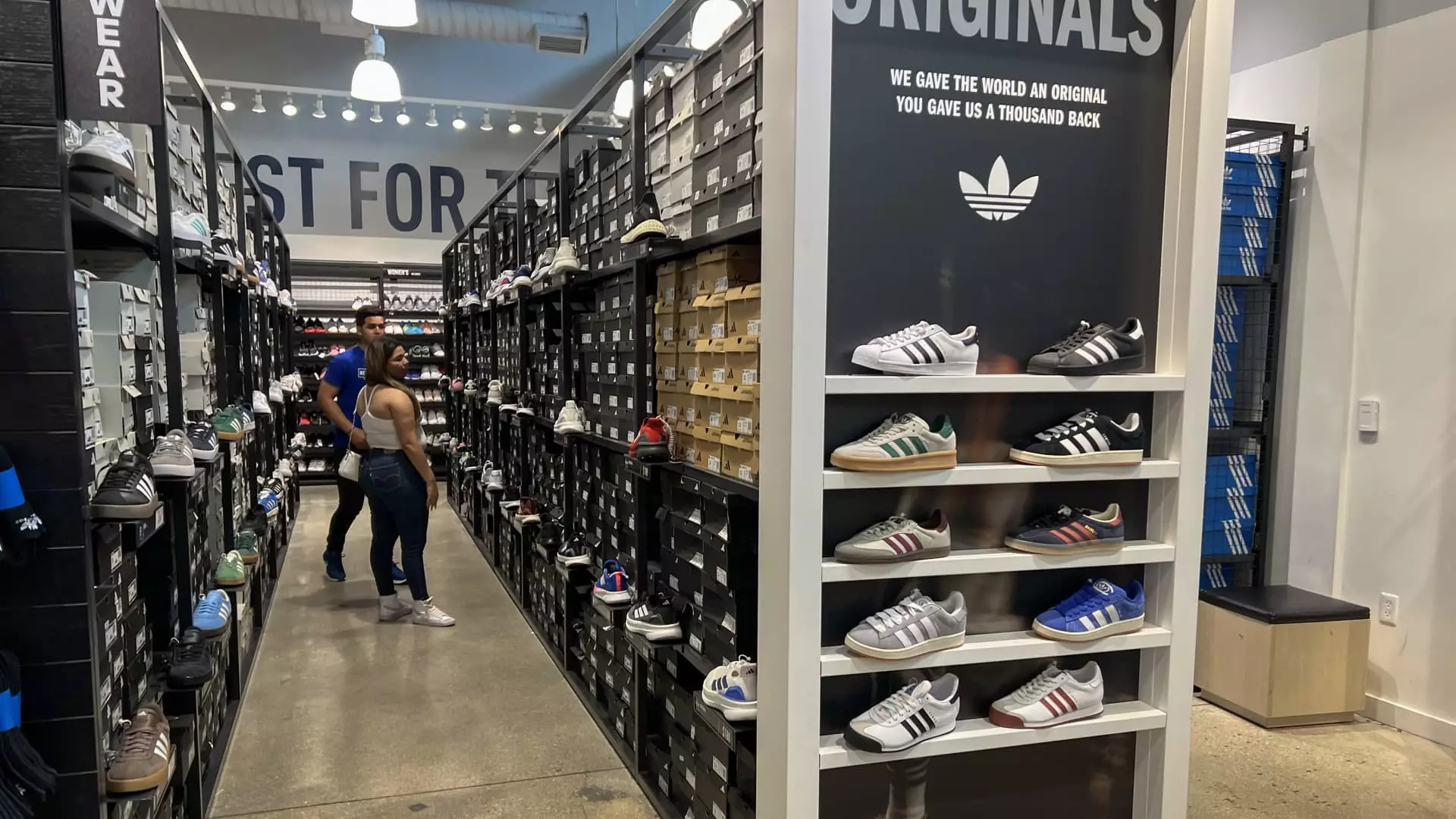In a world increasingly tangled in the web of economic nationalism, Adidas, a titan of the sportswear industry, has become a prime victim of U.S. tariff policies. The company recently announced a grim forecast directly linked to the heavy toll that President Donald Trump’s tariffs are set to impose. With import tariffs on China soaring to an astonishing effective rate of 145%, Adidas is bracing itself for unavoidable price hikes on all products sold in the U.S. marketplace. This scenario raises urgent questions about the sustainability of international commerce and the broader implications for consumers who already face economic pressure.
It’s infuriating to consider that while the corporate behemoth reports a staggering 155% leap in net income, thanks to the brand’s rebound from a tumultuous period marked by controversy, it cannot reap the full benefits of its success. Despite an impressive first quarter where net sales surged 12.7%, the dark cloud of tariffs looms large, hampering their full-year outlook. It’s difficult not to perceive this situation as a gross misalignment of priorities in economic policy—a self-inflicted wound on American consumers and companies alike.
Impacts Across the Retail Landscape
The fallout isn’t just a solitary crisis for Adidas; it resonates throughout the retail sector. From budget e-retailers to luxury brands, many are caught in the same conundrum of inflated costs and uncertain consumer behavior. Places like Temu or high-end establishments such as Hermès are compelled to revisit their pricing strategies and forecasts, causing a ripple effect that can alter the retail landscape permanently. While Adidas grapples with the challenge of uncertain tariffs, it’s clear that the entirety of American consumerism is vulnerable to these punitive economic measures.
Adidas candidly admits that it is “somewhat exposed” to these trade tensions, leading to drastic reductions in exports from China. This is emblematic of a broader trend where companies may find themselves forced to retreat from their global supply chains, adversely affecting international trade relationships. It’s a vicious cycle that begs for reform. Consumers should not have to pay for a lack of coherent trade policy, especially when the companies involved are capable of contributing positively to the economy without these additional financial burdens.
Brand Resilience Amidst Political Challenges
It’s encouraging to see that Adidas is largely emerging from the shadows of its past affiliations with controversial figures, refocusing its attention on robust sales across various regions and channels. With double-digit growth in its footwear line—a key selling point in both lifestyle and performance categories—the brand remains a stronghold amid turbulent waters. Analysts have noted that Adidas’s ongoing efforts to revamp its image and product selections are beginning to pay off. However, the shackles of tariffs always seem to loom over any success.
Consumer sentiment has its own ebb and flow, often influenced by external factors far beyond the product itself. How long will consumers remain loyal during a period of price hikes? This question hangs ominously in the air, resembling a ticking clock. As it stands, the company has unwavering commitment and brand strength, yet the burly influence of politics can thwart even the most ironclad business strategies.
Pondering the Bigger Picture: Political Disruption
Ultimately, this scenario highlights a pervasive issue—an apparent disconnect between corporate America and the overarching political environment. It’s ludicrous that consumer brands known for their resilience and adaptability are thrust into precarious positions due to tariffs that seem to pivot more on politics than on sound economic reasoning. The logic behind enforcing such tariffs, especially against nations where Adidas manufactures, seems counterproductive when the primary goal should be stimulating economic growth rather than hindering it.
It’s time for a more centrist approach to economic policy—one that prioritizes the complex realities of international trade while carefully considering the needs of American consumers. The stakes are high, and as we stand at this crossroads, policymakers must recognize the profound implications of their decisions—not only for brands like Adidas but also for the heartbeat of the American economy itself.

